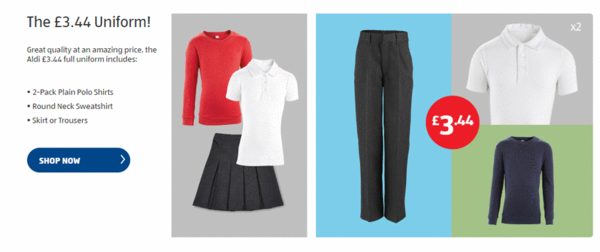Back to School Retail
Retail spend on back to school items in the UK has experienced steady sales growth over the past three years from £1.41bn in 2013, to £1.43bn in 2014 and £1.45bn in 2015. but analysts at FBIC and Competitor Monitor believe this growth could see a dramatic decrease driven by new discount retail players, increased pressure on parents by schools to invest in technology and the impact of the underperforming pound on the clothing retail sector.
2015 Research by Verdict found that women made up 58.7% of school uniform shoppers (especially in September) with an average spend between £31 and £41. Most parents purchased school uniforms bi-annually, predominantly in the August during the summer and February during the half term. August also delivered the most uniform purchases of parents with children at 44.8 % compared to 27.7% in July and 39% in September months. Even though, the month of July experienced the least number of uniform purchases, it achieved the highest online spend in 2015 with 34.4% of all uniform sales that month being made online compared to 29.3% in August which achieved the most uniform sales.
With the value of the pound hitting a 30 year low in Q2 2016, experts are adamant that UK high street clothing retailers may not be able to swerve the inevitable increase in costs as they continue to focus on a largely domestic market that remains heavily reliant on offshore based manufacturers and suppliers. Although this may have some truth, Competitor Monitor believe that the value of the pound is only one of many problems facing the non-food retail market, and the back to school market specifically.
Purchase influencers
Value
Reviews
Brands
Although subjective, Competitor Monitor believe that branding also plays a key part in influencing retail purchaser decisions. Most supermarkets offer their own clothing brands that are competitively priced, as part of their nonfood retail offering. Recognised brands such as George at ASDA, F&F at Tesco and Tu at Sainsburys arguably offer retail consumers products that capitalise on existing brand loyalty. “They also need to be an easily justified purchase, not a bank-breaking decision. Something customers can see, want and afford at the same time.” says Senior Retail and Fashion Analyst, Katie Smith.
Katie smith also adds, “The wow-factor really lands when you compare it to the UK mass market where 2% of products are priced £4-6 and 4% between £8 and £10. In fact, the general UK mass market has only 9.6% of its offering beneath £10 while its 55% at Tu, 58% at F&F and 72% at George.”
Common Denominator
Undoubtedly, some retailers will fare better than others in the battle for the back to school retail spend but the rise of discount retailers entering this space might see supermarkets pressed on price and high street retailers heavily reliant on the fashion conscious consumer whose spending decisions are driven by brands and trends.
See Price Monitor, Product Monitor, Review Monitor and Brand Monitor in action here.
